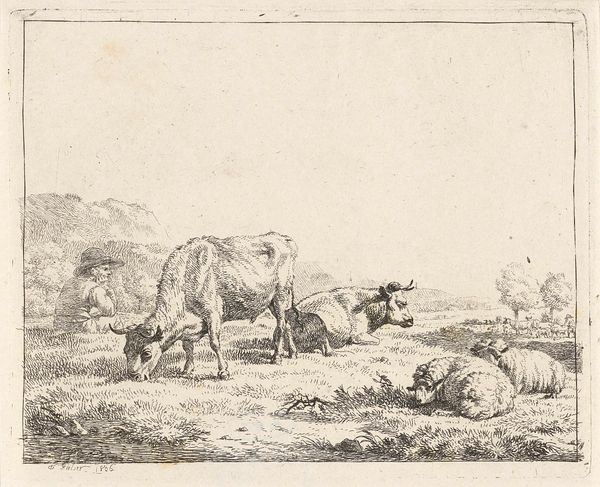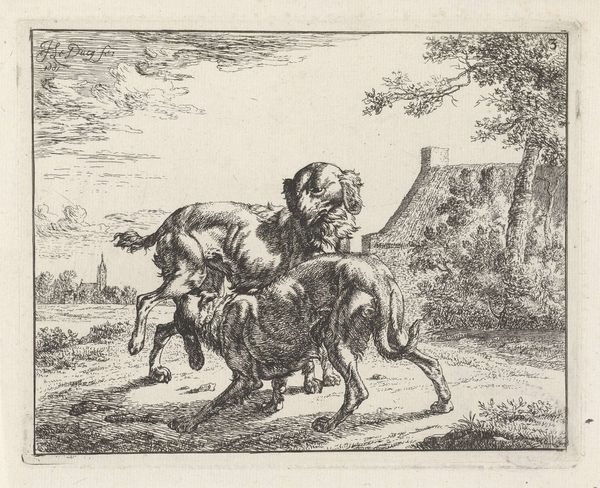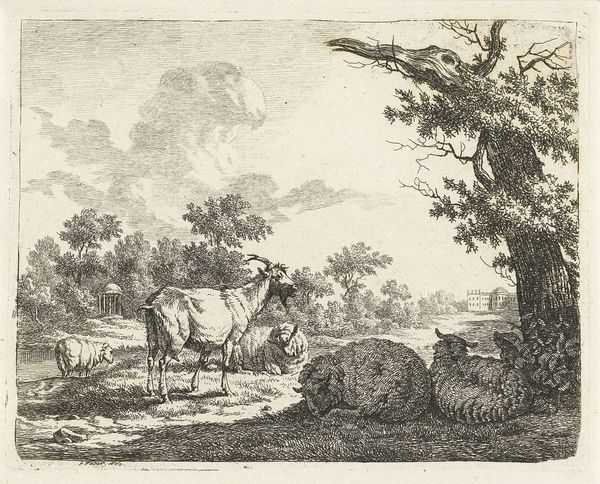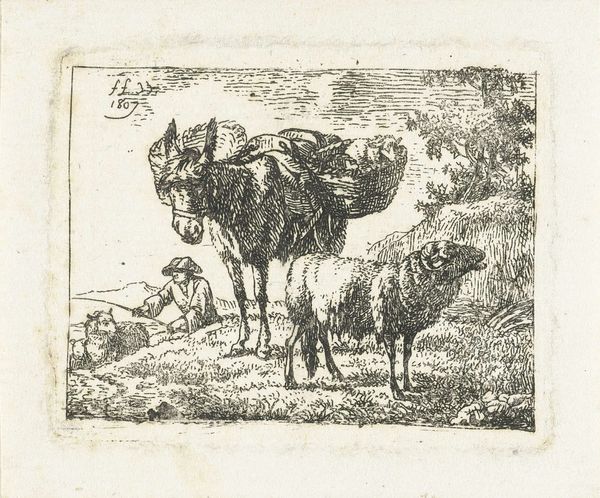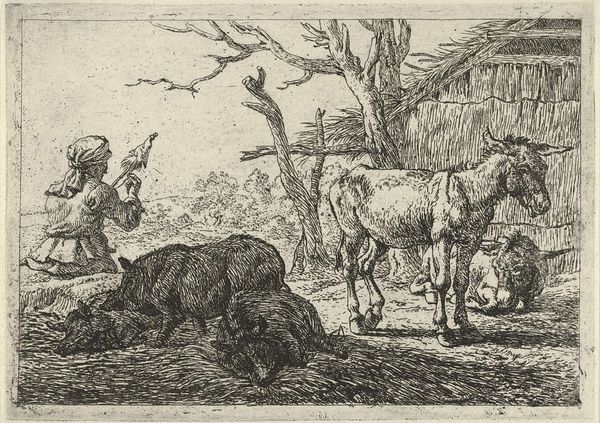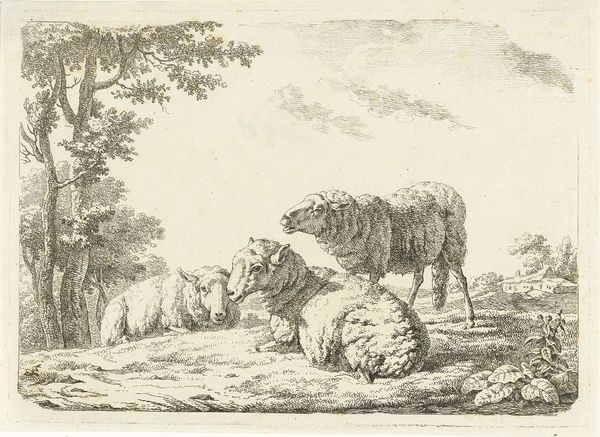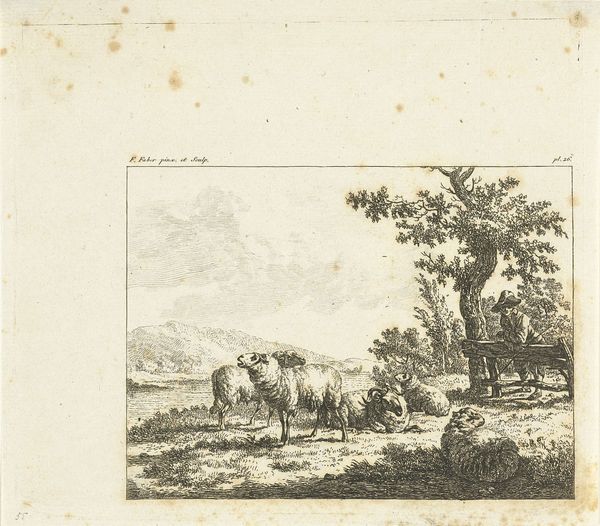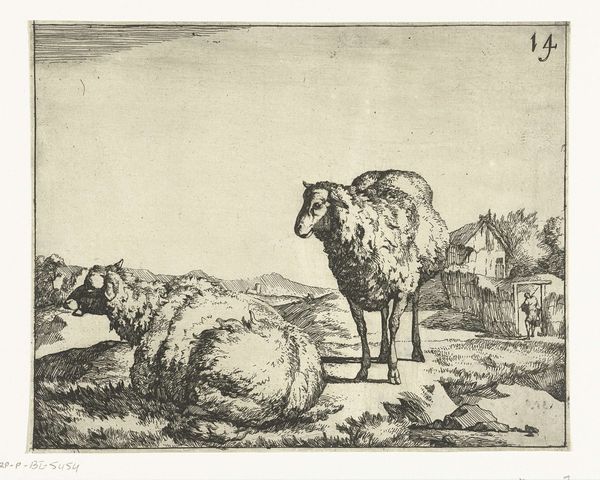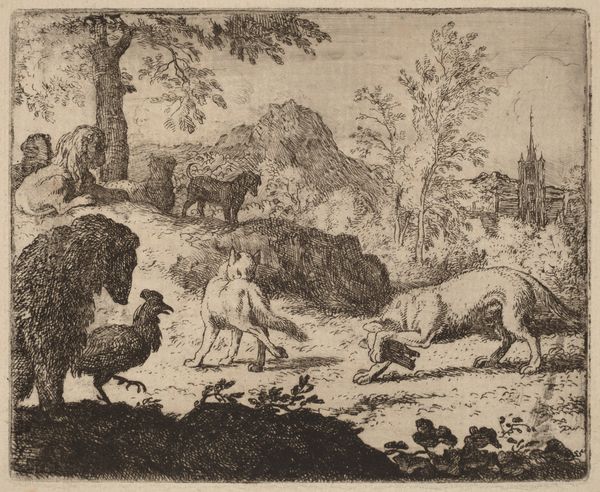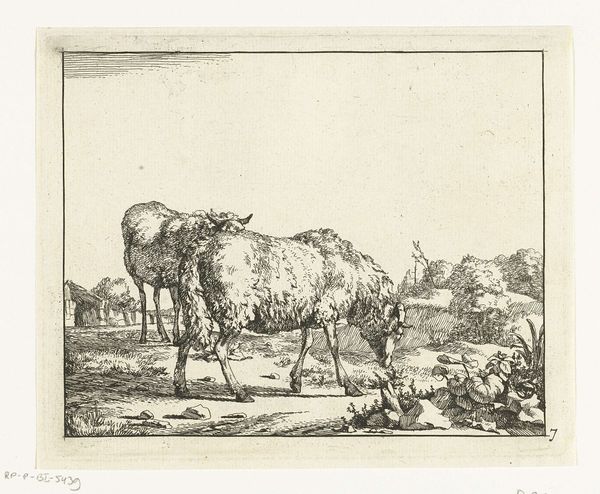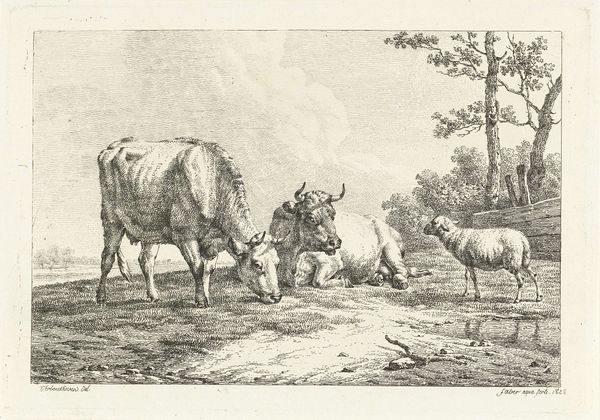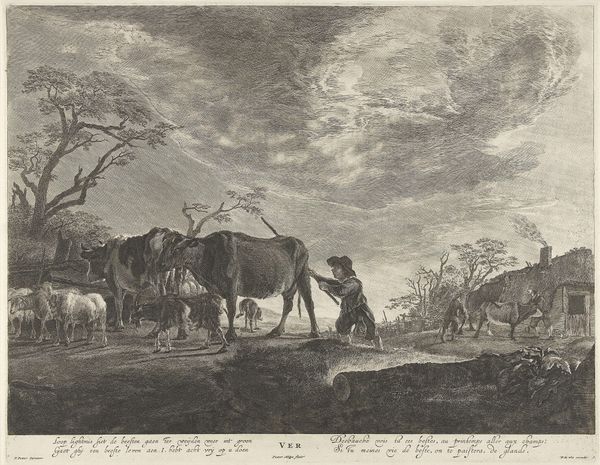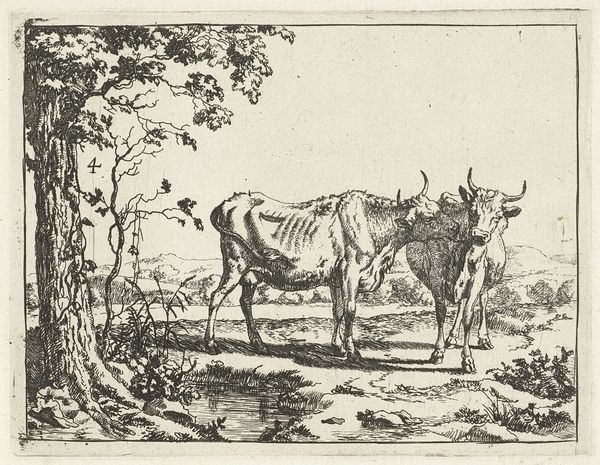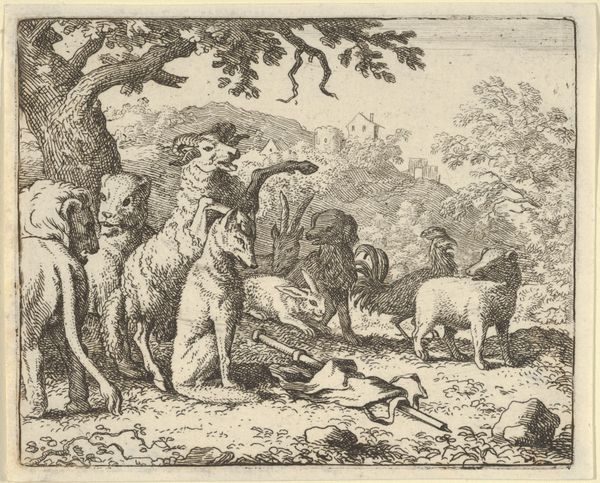
drawing, etching, paper, ink
#
drawing
#
narrative-art
#
pen sketch
#
etching
#
landscape
#
figuration
#
paper
#
ink
#
romanticism
#
genre-painting
Dimensions: height 117 mm, width 159 mm
Copyright: Rijks Museum: Open Domain
Editor: So, here we have Fréderic Thédore Faber’s "Herder met schapen en een ezel" from 1806, rendered in etching and ink on paper. The subject matter is straightforward, a shepherd with his animals, but there's a certain rustic charm that I find appealing. How do you interpret this work from a formalist perspective? Curator: Intriguing. I would immediately draw attention to Faber's masterful use of line. Notice how the density and direction of the etched lines delineate form and texture. The varying thicknesses create a visual hierarchy, drawing our eye to specific focal points, such as the shepherd's gesturing hand. Observe also the treatment of light – created entirely through the absence or presence of ink. Do you notice a discernible structure to the composition itself? Editor: I see. The lines definitely give a sense of volume to the sheep’s wool and even to the rough texture of the donkey. And yes, there’s a strong diagonal line from the top left created by the tree leading down to the shepherd in the lower right. It does give the image a certain… energy. Curator: Precisely. The dynamic tension created through this deliberate arrangement speaks to the work’s inherent visual language. Consider also the interplay between positive and negative space – how does that relationship affect the overall reading of the piece? The artist, through simple choices in the manipulation of basic elements, dictates a narrative rhythm across the visual field. It provides us a pathway into understanding this scene, no? Editor: Absolutely. Focusing on the lines, the composition, and even the negative space offers a new lens through which to view even a seemingly simple genre scene. Curator: Indeed. Analyzing the artwork through a structural lens lets us unlock the fundamental vocabulary of the image, transcending surface narrative. It’s these intrinsic formal qualities that lend the work lasting meaning and artistry.
Comments
No comments
Be the first to comment and join the conversation on the ultimate creative platform.
